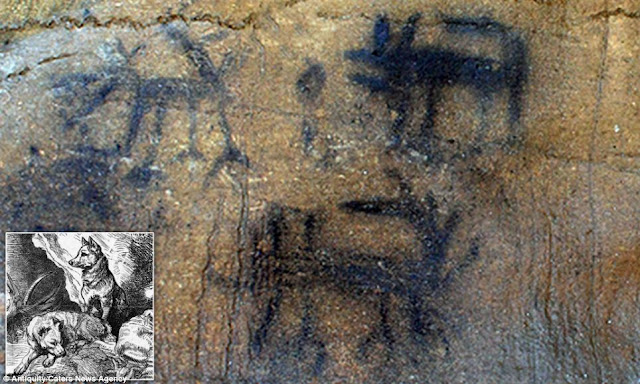The faded images in Tennessee's Cumberland Plateau are believed to be the most widespread collection of such art ever found in the U.S.
The preserved artworks were found by researchers Jan Simek, Alan Cressler, Nicholas Herrmann and Sarah Sherwood from the Department of Anthropology at the University of Tennessee and Mississippi State University. The researchers state that some of the pictures found remain extremely fragile because they were drawn into mud.
Researcher Nicholas Herrmann noted that, "Human images are often shown in activities suggesting heroic or ceremonial action, flying, transforming into animal shapes or reaching through the rock surface."
Rock art is commonly thought to have been drawn by Native Americans and other races as part of rituals and ceremonies. Mud was also traditionally used by Native Americans in the south east part of the country because it was readily available and was seen as an ideal canvas by prehistoric cave artists.
The images found vary in that some of the pictures were drawn using shallow lines made with a pointed tool. This type of art shows events such as hunting, or depicts animals that the Native Americans would have lived with and eaten.
Other images are more elaborate, depicting mythical creatures and representing the Native's spiritual beliefs. Some also were drawings of canids such as wild dog-like creatures that included wolves, foxes and jackals. Other animal images, such as quadrupeds and reptiles, are rare in open air art work but commonly found in dark cave settings.
According to the study, the researchers documentation of Tennessee rock art sites has led to a number of themes being spotted. The most common theme in open air rock art was a human figure or anthropomorph. Open air anthropomorphs were 'simply drawn, but sometimes they show details like eyes or horns and often have large hands with exaggerated fingers.'
Anthropomorphs are also depicted in petroglyphs and are one of the most common elements seen in caves. These images appeared first during the Archaic period. Woodland period sites also contain human images. The researchers have concluded that both open air and cave art sites in Tennessee share a central theme of human imagery.
Circles are also common in the open rock art sites. These include ‘sun’ pictographs and concentric circle petroglyphs. In at least three cases they are associated with falling water. Circles can also occur in the open with anthropomorphs. Other common motifs in both caves and open air sites are grooves and curving lines. In the open air, these are often produced by a pit and groove technique in soft sandstone and are frequently found in sites that also contain realistic motifs.
The researchers found that in contrast, 'birds are among the most frequent depictions in dark zone cave art. 'Frequently, although not exclusively, birds inside caves are depicted in flight,with their wings extended and flight feathers clearly delineated. The common presence of birds inside caves, but not in the open air sites, is perplexing if birds are creatures associated with the upper or celestial world, as has been interpreted by south-eastern archaeologists.
The drawings discovered in Tennessee are believed to represent the Native American's prehistoric world in three dimensions - the upper parts of the art are 'celestial' representing religious beliefs. The middle sections usually show plants, animals and the world in which they would have live. Art that is found in the lower parts of the caves and walls represent 'darkness, death and danger'.
It is known that people came to the Plateau to find specific foods, including animals and plants and to obtain non-food resources. Rock art was an integral part of how people conceived and used their landscapes.









looks like they had shoes of some sort, too...from looking at the last pic.
Yes but all of these drawings are open to interpretation, these examples are very good actually
Thank you so much for sending this article along to all of us. If only we were as smart as these people so long ago. If only we left pictures in stone for our children and others to see in the eons ahead. I loved this article so much.
We have here in Powell County, KY, on the western edge of the plateau, perhaps the most complex rock art in the E. U. S. A face image with the hint of a connection to Central America and the Aztecs. I'll send you a booklet with explanation and images if you provide an address. alancornette@bmail.com Al C.
The white lines superimposed on one of these looks like it might be an alphabet. I see what might be a pi, a gamma, a k, and perhaps a t
6,000 years ago and that art in the rocks, hmm so they discovered America 5,500 years before Colombus.
tom Watson, they are letters. Historic graffiti superimposed over the ancient art in recent times.
Interesting that depictions of dogs most-closely resemble the Carolina Dog, which would have lived alongside these ancient people. Wolves and foxes don't carry their tails up over their backs like that, and of course, jackals aren't found in North America at all.